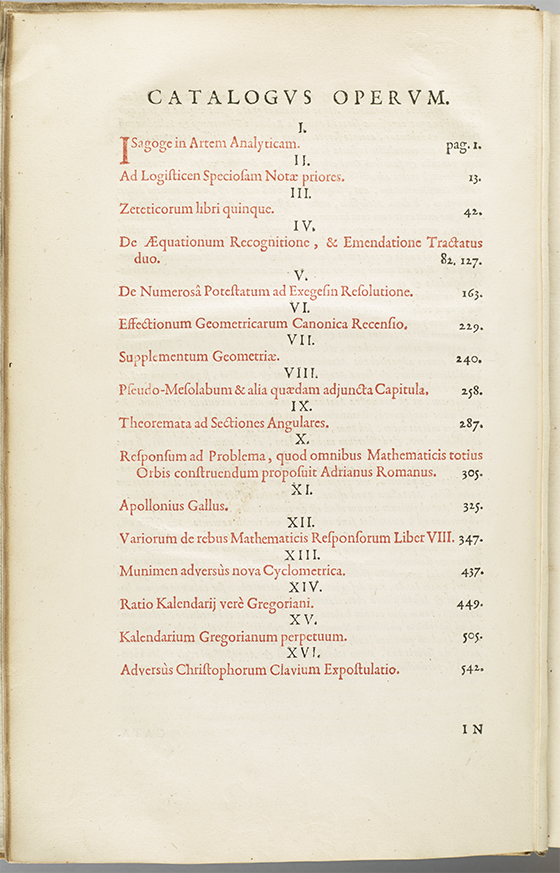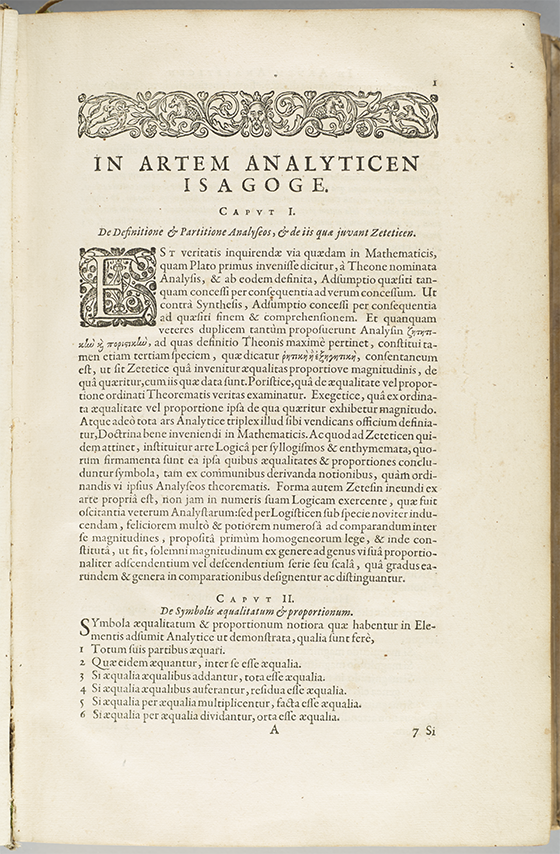- About MAA
- Membership
- MAA Publications
- Periodicals
- Blogs
- MAA Book Series
- MAA Press (an imprint of the AMS)
- MAA Notes
- MAA Reviews
- Mathematical Communication
- Information for Libraries
- Author Resources
- Advertise with MAA
- Meetings
- Competitions
- Programs
- Communities
- MAA Sections
- SIGMAA
- MAA Connect
- Students
- MAA Awards
- Awards Booklets
- Writing Awards
- Teaching Awards
- Service Awards
- Research Awards
- Lecture Awards
- Putnam Competition Individual and Team Winners
- D. E. Shaw Group AMC 8 Awards & Certificates
- Maryam Mirzakhani AMC 10 A Awards & Certificates
- Two Sigma AMC 10 B Awards & Certificates
- Jane Street AMC 12 A Awards & Certificates
- Akamai AMC 12 B Awards & Certificates
- High School Teachers
- News
You are here
Mathematical Treasures - Francois Viete's Collected Works

François Viète (1540–1603) was a mathematician in the employ of the French King Henry IV. Known for his work on ciphers (codes), Viète is also remembered for his innovative use of symbolism in algebra. In his In artem analyticen isagoge (1591), he employed the letters of the alphabet, using vowels to represent unknowns and constants for knowns. Frans van Schooten (1615–1661), a Dutch Professor of Mathematics at the University of Leiden, translated Viete’s work from French into Latin and published it as a collection, Opera mathematica (1641). Van Schooten is better known as the popularizer of Descartes' works. The title page of the Opera is shown above.

This is the Table of Contents for Opera mathematica.

Chapter 1 of Viete’s Opera begins on the first page of In artem analyticen isagoge.
These images from its George Arthur Plimpton Collection are presented through the courtesy of the Columbia University Libraries.
For more images from a different copy of this text, see Mathematical Treasure: Francois Viete's Opera Mathematica.
Frank J. Swetz (The Pennsylvania State University), "Mathematical Treasures - Francois Viete's Collected Works," Convergence (January 2021)




